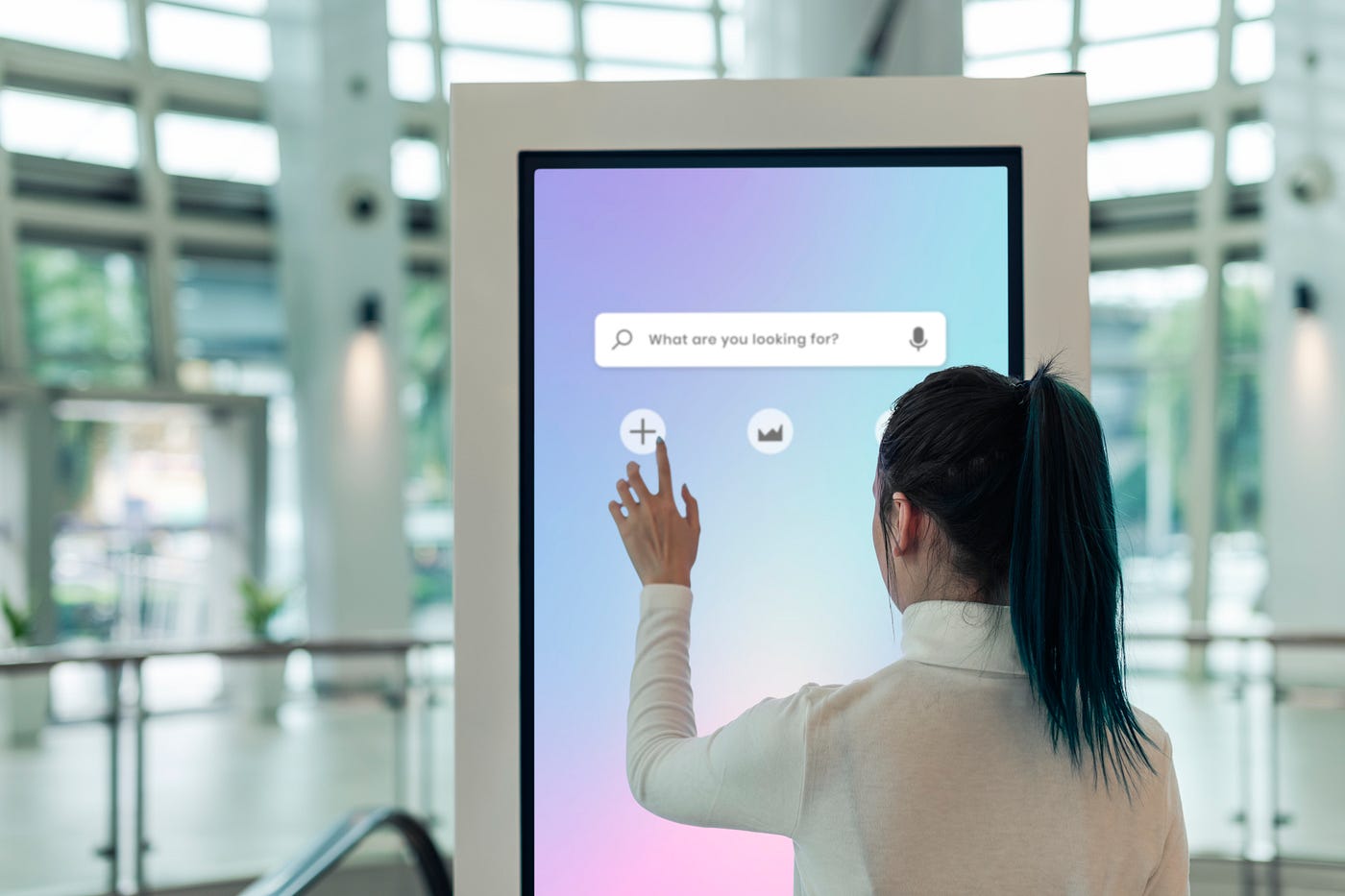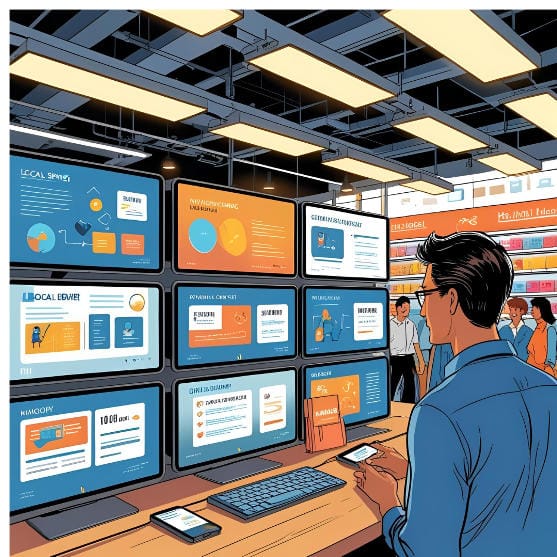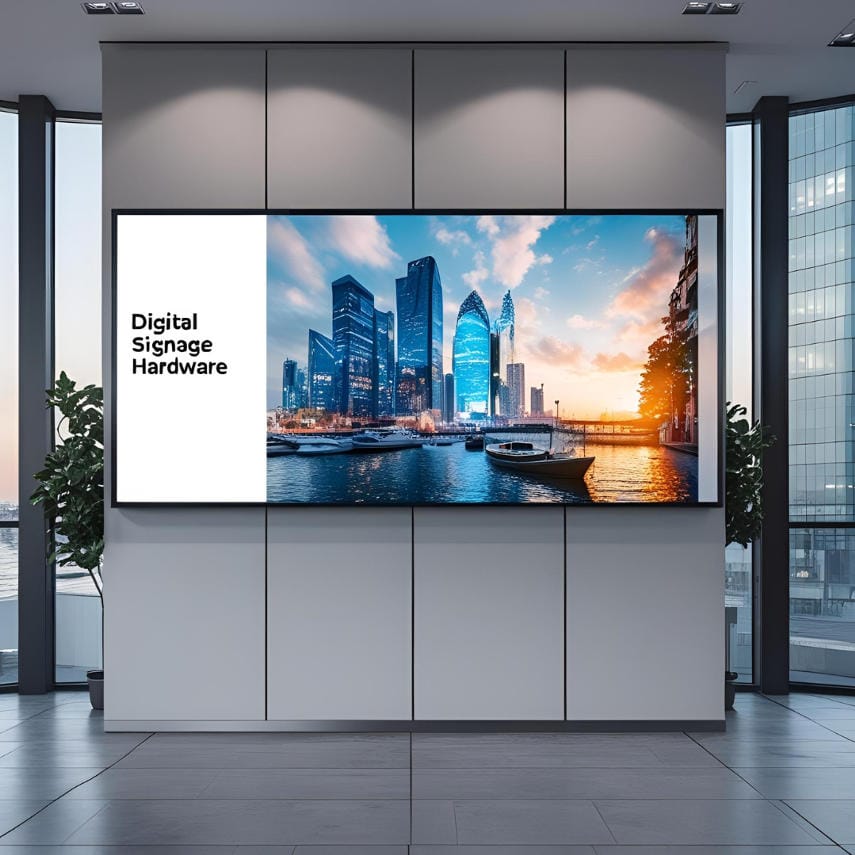The success of your visual communications strategy may depend on the digital signage providers you choose. The ideal partners provide more than screens: they provide a complete digital signage solution that includes hardware, interactive digital signage software, content creation, and support. Continue reading to know what to consider, why Nento is the best choice, and how to choose the best provider in retail, hospitality, restaurants, and more.
What Makes a Top Digital Signage Provider?
Seamless Hardware & Software Integration
Major digital signage companies offer displays that are already configured to use their CMS, media players, and network systems. This integration will reduce your IT burden and will ensure that your screens, either wall-mounted video walls or countertop digital menu boards, are running perfectly on day one.
Powerful Content Management & Templates
In addition to common scheduling, top vendors offer drag-and-drop editors, multi-zone layouts, and a free template library of restaurant and other verticals. Search for digital signage providers that enable nontechnical users to create eye-catching promotions, event announcements, and wayfinding displays with their digital signage services.
Scalability & Multi-Location Support
Your digital signage solution will need to be easily scalable as your network expands. The top digital signage providers also provide hierarchical user roles, group-based playlists, and API access to centrally control screens at dozens or even hundreds of locations.
Professional Continual Support and Training
Important are hardware warranties, software updates, and 24/7 help desks. The leading digital signage vendors supplement their services with on-site installation, remote diagnostics, and tailored training, so that your staff can handle displays without outside help.
Key Features Offered by Digital Signage Providers Like Nento
Interactive Digital Signage Software
Touch screens that activate viewers are turning passive viewers into active ones. Interactivity sells itself, whether it is digital signage for restaurants where customers can customize orders or a retail kiosk where they can look up products; they are more likely to engage and spend time in the area.
Digital Menus Boards
Foodservice operators depend on dynamic promotions and real-time pricing. An effective digital menu board system will allow dayparting, nutritional callouts, and POS feed integration, reduce the number of manual adjustments, and print costs.
Holistic End-to-End Services
Full-service providers manage all the steps, including site surveys and network planning, content strategy, and creative design. Their digital signage solutions entail mounting of displays, player configuration, and designing of brand-aligned visuals that attract attention.
White Label Reseller Programs
Reseller digital signage programs allow agencies and VARs to resell turnkey systems using their own brand. Such alliances provide access to volume discounting of hardware, co-branded marketing, and OEM support.
Why Choose Nento as Your Digital Signage Partner?
Nento is the market leader in digital signage as it integrates:
- Flexible CMS: On-premises or cloud-based with multi-screen scheduling
- Hardware Agnostic: Compatible with commercial displays, tablets, and video walls
- Creative Services: Ability to use interactive digital signage software, experts, and free templates for restaurants
- International Coverage: Technical support 24/7 and on-site installation anywhere
- Scalable Solutions: Ideal for one cafe or a national retail chain
The one-stop digital signage solution offered by Nento gives you consistent branding, hassle-free uptime, and a quick ROI in the form of more sales and efficient operations.
Real‑World Applications
- Retail: Attract customers to promotions and new items through eye-catching window displays and kiosks in the aisles.
- Corporate: Screen internal messages, live KPIs, and social streams in office break rooms and lobbies.
- Restaurants & Cafes: Remove the stagnant chalkboards and install dynamic digital signage for restaurants that feature rotation of specials and upselling combos.
- Healthcare: Use wayfinding screens, wait time information, and health tip loops in waiting rooms to guide patients.
- Hospitality: Develop guest services through interactive lobby directories, event schedules, and weather forecasts.
Selecting Your Ideal Provider: A Quick Checklist
User Experience & Ease of Use
Make sure that the CMS is easy to train, it has an interactive dashboard, and it allows drag-and-drop content creation.
Deployment Flexibility
Search digital signage providers that provide cloud and local server, offline playback, Android, Windows, and embedded media player support.
Technical Support and Training
Ensure that it includes 24/7 phone and ticket support, extensive documentation, video tutorials, and on-site training packages.
Pricing & ROI
Compare up-front hardware cost, subscription plans, and professional services. Estimate the possible revenue increase as a result of higher sales, lower printing costs, and customer engagement.
Finding Your Perfect Digital Signage Partner
Selecting the best digital signage provider establishes the base of customer-engaging experiences and operational performance. Nento is a combination of innovative interactive digital signage software, powerful digital menu boards, and support that is the best in the industry, which can enable you to modernize your communications and achieve measurable results. Contact Nento today to explore how our end‑to‑end solutions can elevate your brand.
FAQs
How do I determine which provider is best suited for my industry?
Look for vertical‑specific features – menu scheduling in restaurants, wayfinding in hospitals, and interactive catalogs in retail. Personalized digital signage services are a sign of strong knowledge.
Can I integrate signage with my existing systems?
Yes. The most popular digital signage providers provide APIs and connectors to POS, PMS, ERP, and marketing automation systems, forming real-time data flows to your displays.
Are there affordable options for small businesses?
Entry-level plans are available with a limited number of screens, open-source versions of CMS, or basic hardware packages, and many vendors, such as Nento, will offer these entry-level plans to enable small operators to make a small upfront investment.
What is the typical timeline for deployment?
Standard displays and templates can be implemented in a single site within less than two weeks. Multi-location rollouts might take 4-8 weeks to plan and install, and develop content.
How do I measure success?
Measure variables such as dwell time, rates of interaction, redemption of on-screen promotion, and general sales lift to measure the effectiveness of your digital signage solution.








